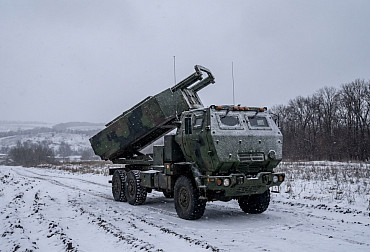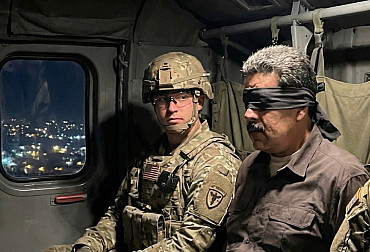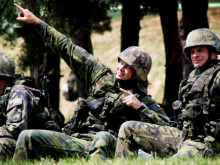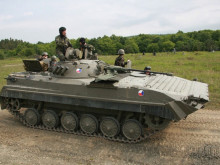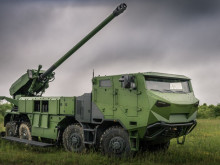Soldiers from the 4th Rapid Deployment Brigade float across the water with Pandurs
Today ends the three-week exercise focused on the floating of BVP-2 and wheeled IFV Pandur vehicles in preparation for combat vehicle drivers. Floatings are clearly one of the most difficult of all driver training. Float training takes place once every two years, the last time soldiers completed it in Boletice in Šumava. The exercise was started by the commander of the ground forces, General Jung, who in his speech mentioned, among other things, the probable end of the BVP-2 service in the near future. However, during the service of the BVP-2, the 7th Mechanized Brigade still has the ability to navigate and therefore soldiers continue to train it.
Video: Report from wheeled IFV Pandur floating / YouTube
As part of the above exercise, a complete demonstration of the BVP-2 and wheeled IFV Pandur floating took place, including the intervention of the ZVS unit (rescue and recovery service). There was also the removal of an "immobile" wheeled IFV and the rescue of the "man overboard" with his evacuation by an Iveco ambulance.
The exercise lasted a total of 3 weeks, when the first week was focused on training equipment and people, the second week was set aside for the 7th Mechanized Brigade, which practiced river crossings by floating its fourteen-ton BVP-2 Infantry Fighting Vehicles. In the last, third week, the floatings were tested by the wheeled Pandurs of the 4th Rapid Deployment Brigade.
Video: Floating wheeled IFV Pandur including the intervention of the rescue and recovery service unit (panoramic video - to rotate the camera in the desired direction use the arrows in the upper left corner of the screen or press and hold the left mouse button and then move the mouse in the desired direction. + "a" - ") / YouTube
Floatings of the wheeled IFV Pandur were started by the 41st Mechanized Infantry Battalion, drivers of the communications company and the support company from the Headquarters of the 4th Brigade. This was followed by drivers from the 42nd Mechanized Infantry Battalion. Each day always started with boarding, instruction and demonstration of ZVS intervention, then the drivers alternated with individual vehicles so that the floatings were as smooth as possible.
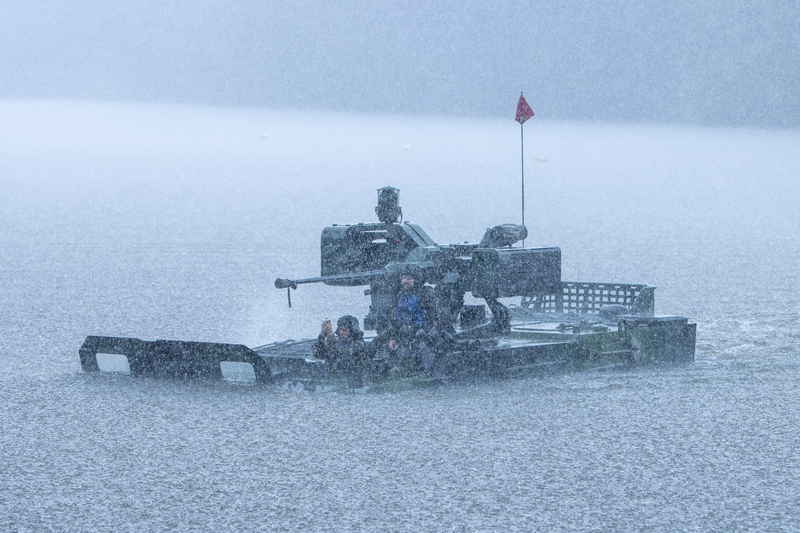 Picture: Floatings of the wheeled IFV Pandur were started by the 41st Mechanized Infantry Battalion, drivers of the communications company and the support company from the Headquarters of the 4th Brigade | 4th Brigade / Army of the Czech Republic
Picture: Floatings of the wheeled IFV Pandur were started by the 41st Mechanized Infantry Battalion, drivers of the communications company and the support company from the Headquarters of the 4th Brigade | 4th Brigade / Army of the Czech Republic
In preparation for the floatings, all drivers had to pass a swimming test in a life jacket, were theoretically trained and tested the activity first on a simulator. The vehicle can be ready for floating within 3 hours (combat conditions). The preparation consists in sealing technical openings, hatches, etc. Furthermore, the troop compartment is loaded with 25 bags of sand (approx. 500 kg), which simulate a part of the squad and the driver thus better acquires habits for floating with a loaded Pandur.
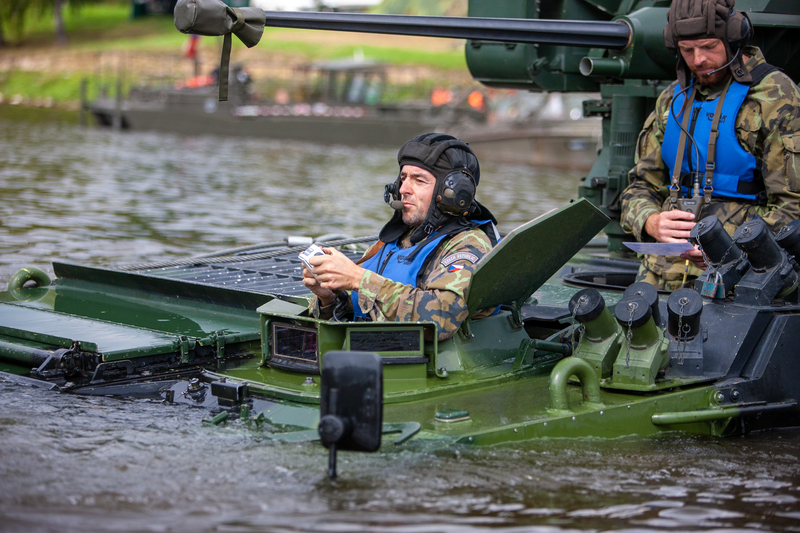 Picture: Floatings of the wheeled IFV Pandur | 4th Brigade / Army of the Czech Republic
Picture: Floatings of the wheeled IFV Pandur | 4th Brigade / Army of the Czech Republic
Before the ride itself, the condition of the vehicle is checked, including the hydrojets, which are directly connected to the 2nd axle of the wheels, which rotate throughout the floating. It also covers the engine intake, which must be opened after floating so that the engine does not "cook" and suffocate. The time of Pandur moving on the water surface is limited, it is not possible to float for an hour or more. The voyage itself is a question of overcoming a water barrier, not a long-distance transfer on the water surface). During the voyage, there are three soldiers in the vehicle - the commander of the vehicle, the driver and in the back is a soldier who checks for leaks.
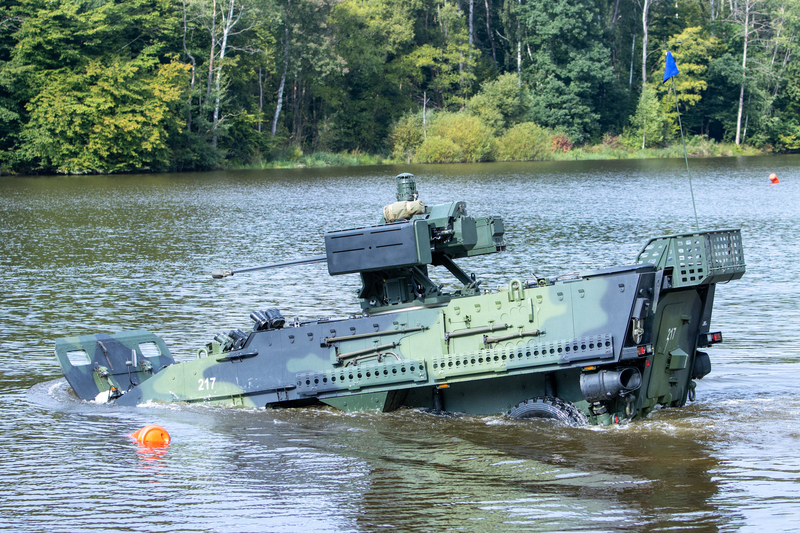 Picture: Floatings are the culmination of the training of combat vehicle drivers and are clearly one of the most difficult driver training. | 4th Brigade / Army of the Czech Republic
Picture: Floatings are the culmination of the training of combat vehicle drivers and are clearly one of the most difficult driver training. | 4th Brigade / Army of the Czech Republic
Floatings are the culmination of the training of combat vehicle drivers, and are clearly among the most difficult in driver training. Floatings take place once every two years, the year before last they were in the Boletice Military District on the Loutka reservoir.
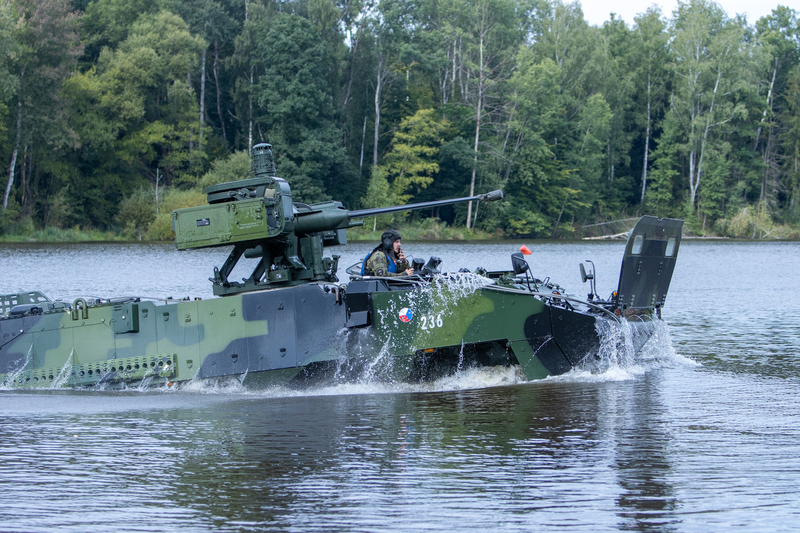 Picture: Floatings of the wheeled IFV Pandur | 4th Brigade / Army of the Czech Republic
Picture: Floatings of the wheeled IFV Pandur | 4th Brigade / Army of the Czech Republic
"Pandurs are not ships, but they are able to overcome a water obstacle with a combat team, ie a ford, a body of water or a river. Training of this kind is necessary for all drivers of Pandur vehicles to be able to use the full potential of this equipment," said the senior ensign of the 41st Mechanized Battalion, Warrant Officer Němec.












